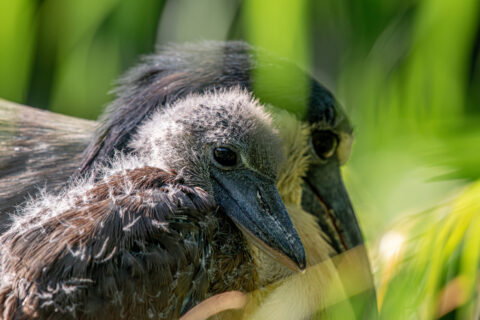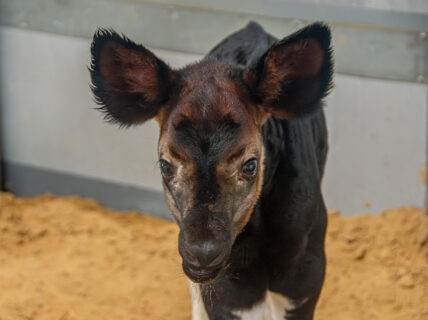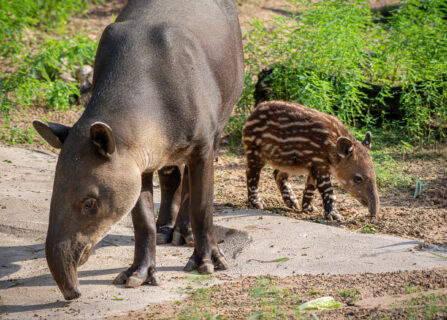Who’s New at the Houston Zoo
There are a few adorable new faces to meet at the Houston Zoo this fall. A boat-billed heron chick, a rare okapi, a playful Baird’s tapir and an endangered eastern bongo calf now call Space City home. The Houston Zoo is an accredited member of the Association of Zoos and Aquariums (AZA) and participates in the Species Survival Plan, a program which oversees the population of select species within AZA member organizations and to ensure a genetically diverse, demographically varied, and biologically sound population.
Meet the new faces

Boat-billed heron
For the first time in Houston Zoo history, a boat-billed heron has hatched. Born on Aug. 23, the fuzzy little bird is the newest member of South America’s Wetlands aviary in the new Fondren Foundation Birds of the World exhibit. While the chick spends most of its time under mom it is becoming more active and vocal. Boat-billed herons are named after the shape of their wide, flat bills that resemble a boat. They use their big bills to scoop fish, shrimp and insects out of the water. These birds are nocturnal hunters and have big, dark eyes that help them hunt in the dark.

Okapi
A male okapi calf was born Sept. 8 weighing approximately 30 pounds. The naming rights for the calf will be auctioned at this year’s Zoo Ball: Celebrating Forest Animals around the World. Okapis are rare animals found only in the most remote rainforests of central Africa making it almost impossible to observe in the wild. At 10 days old, the calf is still very shy and stays close to mom behind the scenes. As he gets bigger, he will live with mom and yellow-backed duikers in the okapi habitat, next to the Asian elephant bull yard.

Baird’s Tapir
Norah was born July 23 and was quick to win the hearts of her keepers and guests. She spends time in South America’s Pantanal mixed species grasslands habitat where she has met the capybaras, giant anteaters, coscoroba swans, rheas and crested screamers. At two months old, Norah’s personality is really starting to come through as sweet and social with her keepers. She will continue to have her watermelon-like spots and stripes for another four months and her favorite activities include laying down for chin scratches. Baird’s tapirs are from Central America – they are standing in for their south American cousins. Although tapirs are the largest land mammals in South America, the females weighing up 700 pounds are considered an endangered species due to habitat loss and predation. Their closest relatives are the horse and rhinoceros families.

Eastern bongo
Born June 25, Hamish weighed 46 pounds at birth. Now at two months old, he is tipping the scales at 103 pounds. Hamish lives with the other female bongos including mom Cara, Bernadette, and little Franny. Guests will notice Hamish’s horns starting to come in making his new favorite past time scratches from his keepers to relieve the itch. Aside from their horns, this rare antelope has an iconic chestnut-colored coat with 12-14 cream-colored stripes on their side. Bongos are one of Africa’s most endangered antelope species with an estimated 100 bongos left in the wild. Hamish’s older brother, two-year-old Harris, will move to Houston Zoo’s sister zoo, Taipei Zoo, in the fall to help enhance the genetic diversity of its species in east Asia.
By visiting the new additions guests are helping to save their wild counterparts around the world. The Houston Zoo is proud to support 33 wildlife conservation projects in 17 countries around the world, including regions where these animals are found in the wild. The Zoo provides training, technical, and financial support to our global community-based wildlife conservation partners that are committed to educating and strengthening local communities, conducting research, and reducing threats to save animals from extinction.
